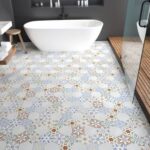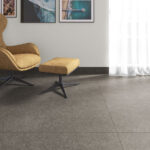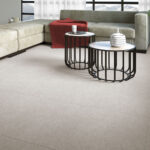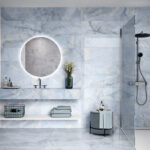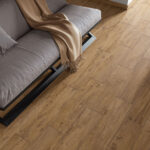When it comes to delivering a successful interior design project, every interior designer understands the importance of balance and symmetry in colour, texture and light.
In your quest for decor perfection, Ceramic City is here to help you master the finer details, from getting the colour palette just right to balancing textural touches.
Why choose tiles for interior design
Tiles are a popular and versatile choice for interior design due to a variety of reasons. They offer a wide range of aesthetic possibilities and functional benefits that make them suitable for various spaces and design styles. Here are some reasons why you might choose tiles for interior design:- Durability: Tiles are known for their durability and longevity. They can withstand heavy foot traffic, moisture, and wear and tear, making them suitable for high-traffic areas like kitchens, bathrooms, and entryways.
- Variety of Materials: Tiles come in a diverse range of materials, including ceramic, porcelain, glass, natural stone (like marble, granite, and travertine), and even metal. This allows for a wide selection of textures, colors, patterns, and finishes to match different design aesthetics.
- Design Flexibility: Tiles offer immense design flexibility. They can be arranged in various patterns, such as herringbone, chevron, subway, mosaic, and more, allowing for creative and unique designs.
- Aesthetic Appeal: Tiles can enhance the visual appeal of a space. They can be used to create focal points, accent walls, and decorative elements, adding character and style to the interior.
- Easy Maintenance: Many types of tiles are easy to clean and maintain. They are resistant to stains, spills, and moisture, making them particularly suitable for areas prone to these issues, like kitchens and bathrooms.
- Hygienic: Tiles are a hygienic choice, especially in areas where cleanliness is essential. They do not harbor allergens, mold, or bacteria, which makes them a preferred option for spaces like bathrooms and kitchens.
- Heat Resistance: Certain types of tiles, such as porcelain and ceramic, have excellent heat resistance properties. This makes them suitable for use around fireplaces or in kitchens where cooking activities generate heat.
- Environmental Considerations: Many tile materials, especially natural stone tiles, are environmentally friendly and sustainable. They are sourced from natural materials and can be recycled or repurposed.
- Versatility: Tiles can be used for both flooring and wall applications. They can seamlessly transition from one surface to another, creating a cohesive design throughout a room or an entire space.
- Increased Property Value: Well-designed tile installations can enhance the value of a property. Potential buyers and renters often find tiled spaces appealing due to their durability, aesthetics, and low maintenance requirements.
- Cost-Effective: While some high-end tiles can be expensive, there are also affordable options available that offer a good balance between cost and quality.
